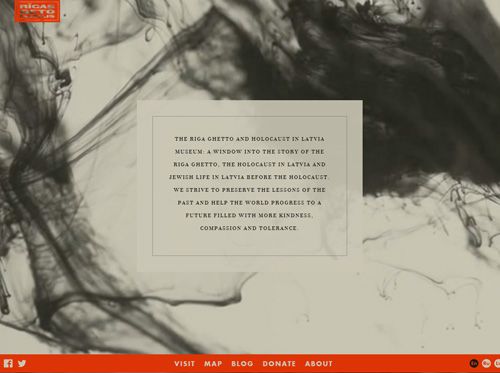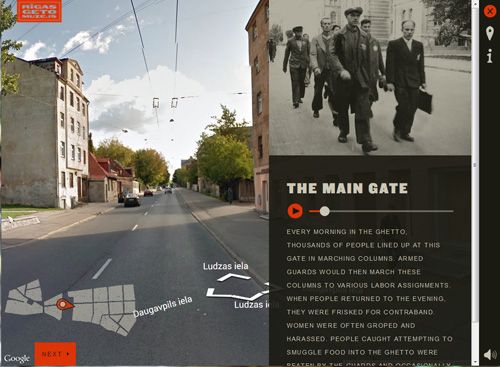Ad Agency Creates Multimedia Website Inspired by Testimony for Riga Ghetto Museum

The designers at Olson, an advertising and digital agency in Minneapolis, typically spend their days creating ad campaigns for clients including McDonalds, Target and General Mills. But for the last six months, a team from Olson has undertaken a project of an entirely different sort: a multimedia, interactive website for the Riga Ghetto Museum in Latvia that incorporates testimony from the USC Shoah Foundation.
The project began when Cory McLeod, senior interactive digital artist at Olson, visited Latvia over the summer and went to the Riga Ghetto Museum. The museum is located in an old historical home in the former ghetto area and guided by local university students. At the end of the visit, visitors have the opportunity to meet with the resident rabbi.
McLeod was inspired by the museum but had noticed that its website could use some improvement.
“I told the rabbi, ‘I think Olson could build a really great site for you,’” McLeod said.
Olson’s offer – to build the museum a brand new website, completely pro bono – was initially met with skepticism. “They probably thought we were scam artists,” McLeod joked.
Nevertheless, McLeod, Mike Fetrow, Olson’s executive creative director, and others from Olson met with Riga Museum staff to explore what the site could be and the stories they wanted it to convey. Fetrow said they decided to balance a message of tolerance with the stories of survivors and how the Holocaust changed them.
While doing research about the ghetto, McLeod came across USC Shoah Foundation’s Visual History Archive. He found 250 testimonies of survivors from the Riga ghetto and listened to all of them. Especially as a parent of two children, the heart-wrenching stories the survivors told had a profound effect on him, he said.
“Every time I found myself starting to tune out, something [in the testimony] would grab me and make me cry,” McLeod said. “There I was at this university viewing station, trying to hold back tears.”

Everyone who worked on the site had a similar reaction when they first heard the testimonies, Fetrow said.
“It’s important for people to be exposed to these stories,” Fetrow said. “That was the rabbi’s hope – that these lessons should be learned going forward, so it will not happen again.”
The site, launched on Monday, is a fully interactive experience featuring text, audio, a virtual map, photos and sound effects. Visitors can read the stories of six survivors of the Riga ghetto, four of whom have testimony in the Visual History Archive, and then explore a virtual tour of the Riga ghetto. Most points in the ghetto are accompanied by audio narration by survivor Yacob Basner and short audio clips of testimony from the Visual History Archive. Survivors describe their memories of different locations around the ghetto, including the main gate, the gallows and the soccer field. Sound effects add to the atmosphere, and the virtual map, powered by Google Maps, shows how much of the ghetto remains unchanged even today.
When they showed the site to the Riga museum staff, they were “overwhelmed,” Fetrow said.
McLeod said he hopes the site helps the museum increase its donations and advance discourse about the Holocaust in Latvia, which typically doesn’t acknowledge its role in the Holocaust very openly.
Olson doesn’t often do pro bono work, but the project inspired Fetrow to think more critically about the opportunity he and his colleagues have to create change and have a positive influence around the world through technology, he said. Watching testimony and creating the site touched everyone who worked on it.
“We wanted to help the museum, but it really became a passion project for a lot of people,” he said.